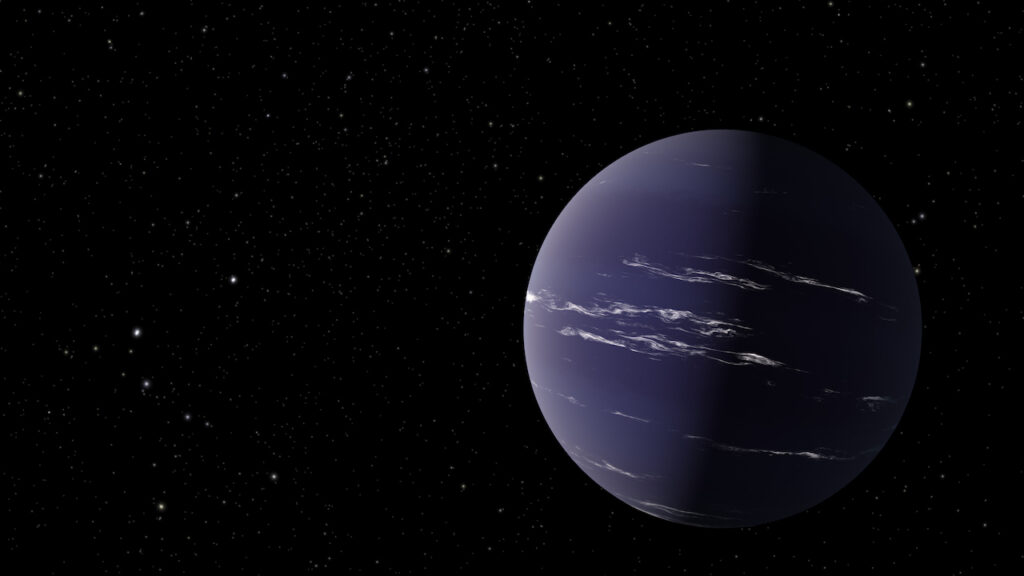
Definition: Neptune-like exoplanets are similar in size to Neptune or Uranus in our solar system. They generally lie in a mass range between Super-Earths and Jupiter-like planets, so roughly between ten and a hundred times the mass of Earth.
Their deep interior are thought to consist primarily of rocks, as well as materials like water and methane, with a thick outer envelope dominated by hydrogen and helium.
Example: HAT-P-11b.
Hot Neptunes
Since planets close to their star are relatively easy to detect with the standard methods of transit and radial velocity, we would expect to find also close-in, so called “hot”, Neptune-sized planets. We have, however, only found very few such hot Neptunes, a phenomenon sometimes called the “Neptune Dessert“. One proposed explanation is that the intense radiation of the star strips away the outer gaseous envelope and just leaves behind the smaller core of the planet.
One of the few exceptions is NGTS-4 b, a 20 Earth-mass planet that orbits its star in just slightly over one day, with a calculated outer temperature of about 1500°C.
